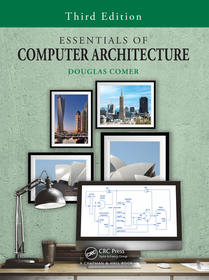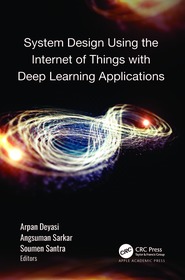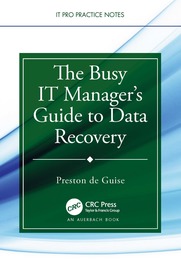
Essentials of Computer Architecture
-
20% KEDVEZMÉNY?
- A kedvezmény csak az 'Értesítés a kedvenc témákról' hírlevelünk címzettjeinek rendeléseire érvényes.
- Kiadói listaár GBP 81.99
-
39 170 Ft (37 305 Ft + 5% áfa)
Az ár azért becsült, mert a rendelés pillanatában nem lehet pontosan tudni, hogy a beérkezéskor milyen lesz a forint árfolyama az adott termék eredeti devizájához képest. Ha a forint romlana, kissé többet, ha javulna, kissé kevesebbet kell majd fizetnie.
- Kedvezmény(ek) 20% (cc. 7 834 Ft off)
- Kedvezményes ár 31 336 Ft (29 844 Ft + 5% áfa)
Iratkozzon fel most és részesüljön kedvezőbb árainkból!
Feliratkozom
39 170 Ft

Beszerezhetőség
Becsült beszerzési idő: A Prosperónál jelenleg nincsen raktáron, de a kiadónál igen. Beszerzés kb. 3-5 hét..
A Prosperónál jelenleg nincsen raktáron.
Why don't you give exact delivery time?
A beszerzés időigényét az eddigi tapasztalatokra alapozva adjuk meg. Azért becsült, mert a terméket külföldről hozzuk be, így a kiadó kiszolgálásának pillanatnyi gyorsaságától is függ. A megadottnál gyorsabb és lassabb szállítás is elképzelhető, de mindent megteszünk, hogy Ön a lehető leghamarabb jusson hozzá a termékhez.
A termék adatai:
- Kiadás sorszáma 3
- Kiadó Chapman and Hall
- Megjelenés dátuma 2024. május 20.
- ISBN 9781032727196
- Kötéstípus Keménykötés
- Terjedelem541 oldal
- Méret 228x177 mm
- Súly 1140 g
- Nyelv angol
- Illusztrációk 239 Illustrations, color; 239 Line drawings, color 563
Kategóriák
Rövid leírás:
Written from a programmer’s point of view, this book covers the three key aspects of architecture: processors, physical and virtual memories, and input-output (I/O) systems.
TöbbHosszú leírás:
This easy-to-read textbook provides an introduction to computer architecture, focusing on the essential aspects of hardware that programmers need to know. Written from a programmer’s point of view, Essentials of Computer Architecture, Third Edition, covers the three key aspects of architecture: processors, physical and virtual memories, and input-output (I/O) systems.
This third edition is updated in view of advances in the field. Most students only have experience with high-level programming languages, and almost no experience tinkering with electronics and hardware. As such, this text is revised to follow a top-down approach, moving from discussions on how a compiler transforms a source program into binary code and data, to explanations of how a computer represents data and code in binary.
Additional chapters cover parallelism and data pipelining, assessing the performance of computer systems, and the important topic of power and energy consumption. Exclusive to this third edition, a new chapter explains multicore processors and how coherence hardware provides a consistent view of the values in memory even though each core has its own cache.
Suitable for a one-semester undergraduate course, this clear, concise, and easy-to-read textbook offers an ideal introduction to computer architecture for students studying computer programming.
TöbbTartalomjegyzék:
Preface
Chapter 1 Introduction and Overview
Chapter 2 Program Interpretation and Transformation
Chapter 3 Data and Program Representation
Chapter 4 A High-Level Overview of Processors
Chapter 5 Instruction Stes and Operands
Chapter 6 Operand Addressing and Operand Types
Chapter 7 Assembly Languages and Programming Paradigm
Chapter 8 Main Memory and Memory Addressing
Chapter 9 Virtual Memory Technologies and Virtual Addressing
Chapter 10 Caches and Caching
Chapter 11 Storage: File Systems, Blocks and SSDs
Chapter 12 A Programmer's View of Devices, I/O, and Buffering
Chapter 13 Buses and Bus Architectures
Chapter 14 Programming Devices and Interrupt-Driven I/O
Chapter 15 Data Paths and Instruction Execution
Chapter 16 CPUs: Micrcode, Protection, and Processor Modes
Chapter 17 Parallelism
Chapter 18 Data Pipelining
Chapter 19 Assessing Performance
Chapter 20 Multicore Processors
Chapter 21 Power and Energy
Chapter 22 Building Blocks: Transistors, Gates and Clocks
Chapter 23 Hardware Modularity
Appendix 1 Rules for Boolean Algebra Simplification
Appendix 2 A Quick Introduction to x86 Assembly Language
Appendix 3 ARM Register Definitions and Calling Sequence
Appendix 4 Lab Exercises for a Computer Architecture Course








